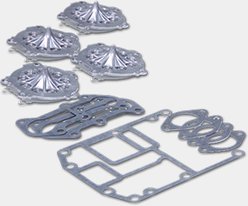
The Basics of Waterskiing Safety
6 tips from a Rock Aqua Jays performer and lifelong waterskier.

Waterskiing is an extremely popular sport in the United States, with millions participating in this exciting behind-the-boat activity. Even non-skiers have to admit it looks like fun, and countless newbies grab the tow handle for the first time each and every year.
That’s why it’s so important to educate these newcomers — and gently remind veteran skiers — about important safety procedures for the sport.
#1 Stretch Ahead of Time
According to Nationwide Children’s Hospital, the most common waterski injuries are strains and sprains, with legs experiencing the most injuries. Stretching is key, and it’s the top on the Mercury-powered Rock Aqua Jay team member Kevin Ostermeier’s safety list.
“If you want to prevent injuries, stretch before you get in the water,” advises Ostermeier, who has been skiing for more than 20 years, since the age of 8.
#2 Don’t Attempt to Out-Muscle the Boat
You’ll want to observe good form even for before you are up on your skis. While the tow boat is idling, begin by holding the handle in front of you. Facing the boat, position your skis so the tips are pointing skyward, and keep your knees bent with the rope between your skis.
“Make sure your skis are parallel to each other,” Ostermeier says. “Think of two French fries side by side, not a slice of pizza!”
When you feel tension in the tow rope, it will be tempting to try to control the situation and muscle yourself up. Ignore that temptation. Just hold your form, as if you’re sitting in a chair, and let the boat do the work.
“You’ll want to use your own strength to maintain balance while keeping core muscles tight,” he says. “You have to let the boat pull you. It’s a great idea to try this on land first.”
How? Simply sit down, and ask a friend to pull you up. You’ll feel the difference between fighting to do it yourself and letting your friend do it, and with practice, this can help you feel more comfortable in the water.
“Even the show skiers practice maneuvers beforehand,” Ostermeier reveals. “It’s sort of like a golfer practicing their swing with an imaginary club. You need to go through the motions and develop muscle memory.”
As the boat pulls you up, you can stay in your crouched position until you find your balance. Then, slowly rise to standing while keeping your hips forward and shoulders back, paying attention to how your skis feel on the water.
Now you can relax and enjoy the ride.
#3 Seek Calm Seas
If you’re new to waterskiing, find a quiet section of the lake. It shouldn’t be too busy or have heavy chop. With plenty of space and a calm surface, you can try cutting back and forth across the wake.
“Do a lot of reps, because that’s important for muscle memory and getting a feel for your equipment,” Ostermeier says.
#4 Know Your Hand Signals
Tow sports like waterskiing require a driver, a spotter (the individual assigned to sit facing the skier and observe them at all times) and, of course, a skier. It is critical for all three to know how to effectively communicate to one another. That means the driver, spotter and skier must know the following hand signals:
- Speed Up: Thumbs-up sign
- Slow Down: Thumbs-down sign
- Stop: Use your index finger to make a cutting motion across your neck
- Turn Around: Point your index finger skyward and spin it in a circle
- OK: Universal OK sign (performed by forming a circle with the thumb and index finger with the other three fingers up and out of the way)
“Everyone needs to be on the same page,” Ostermeier says. “In show skiing, we also pat the top of our heads when we want to communicate that it’s time to go home.”
What happens if you fall?
If you’re not hurt, smile, wave a hand high in the air to signal any nearby boaters of your location, and give the universal OK sign. If you are injured, put both hands over your head in an X; this lets the driver know the boat must approach carefully, without creating extra turbulence.
“Idling back is always best, anyway,” Ostermeier observes. “You’ll save fuel, and you’ll avoid creating rough water. You don’t want to be a Weekend Wally, ripping around the lake.”
#5 Be Aware of Your Surroundings
This tip is for the driver. As the person responsible for the tow boat, you have to keep your head on a swivel and be constantly aware of what is going on around you. That means making sure everyone aboard the tow boat remains seated, communicating clearly with your skier and spotter, and keeping an eye on boat traffic, natural hazards and weather.
“Also, put yourself in your skier’s shoes,” Ostermeier says. “Be careful of cross traffic, don’t cut the throttle suddenly, and always be considerate.”
#6 Use Available Tools if Needed
Admittedly, learning how to waterski can be challenging. It can be hard to hear and in the heat of the moment, it’s easy to forget hand signals. This can leas to some anxiety and even frustration. That is why it’s important to practice ahead of time and take things slowly.
Some new skiers will have a safer and more enjoyable experience if they learn to waterski with a boom, Ostermeier says. A boom is a rigid pole that attaches to the boat or tower and extends to the side. While holding onto the boom, which doesn’t move, a new skier can get their sea legs at slower speeds while communicating easily with everyone aboard.
“I tell every new skier to keep at it and don’t give up,” Ostermeier says.
The more you know, and the more you practice, the more confident you will feel. And the safer you will be.















